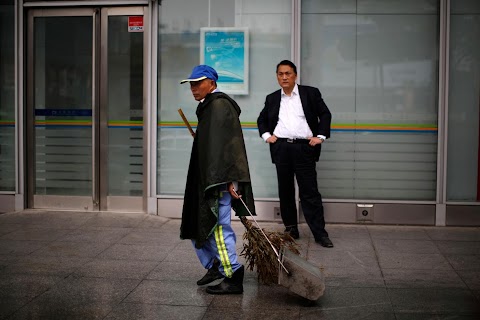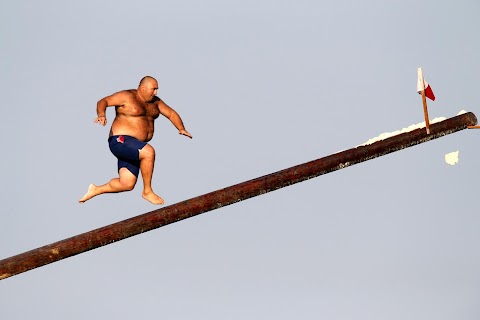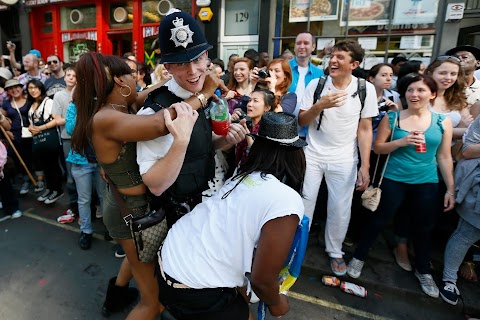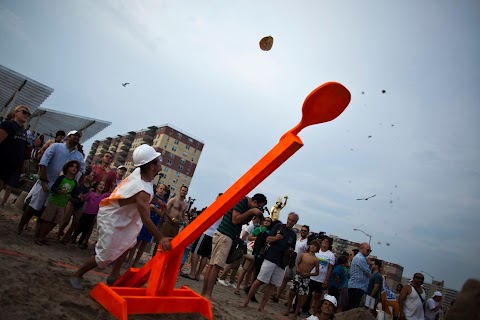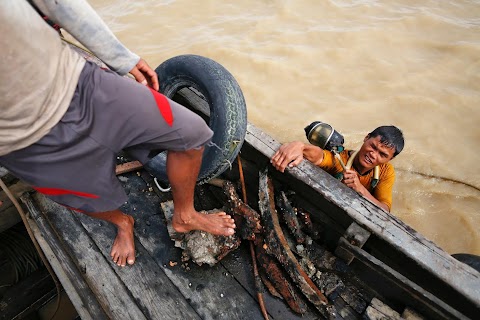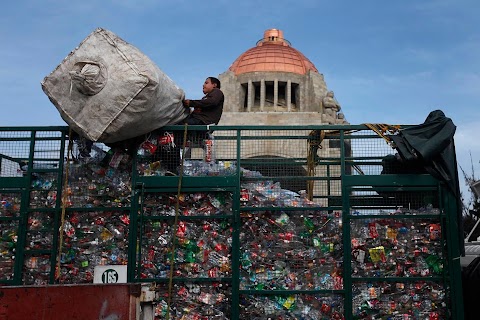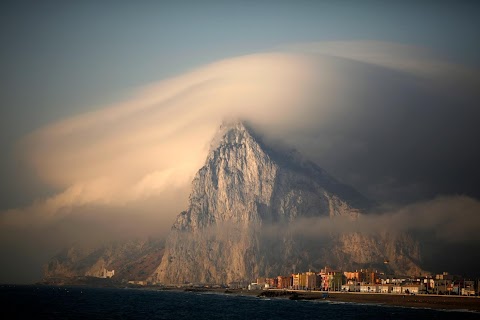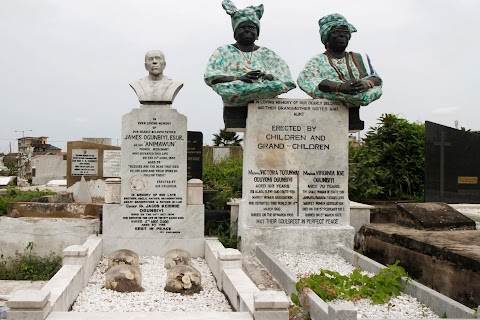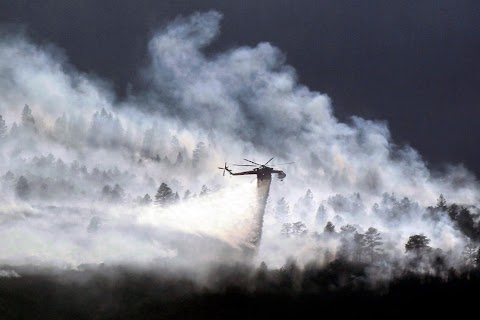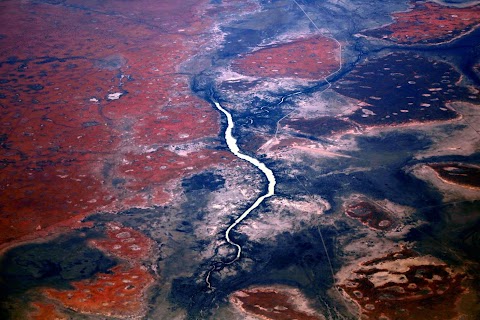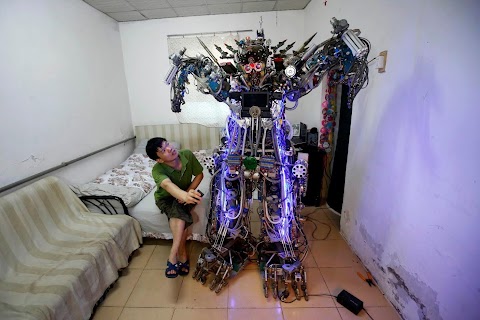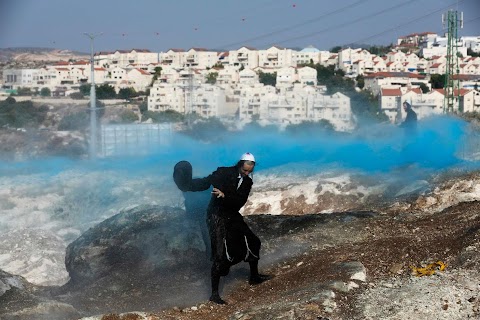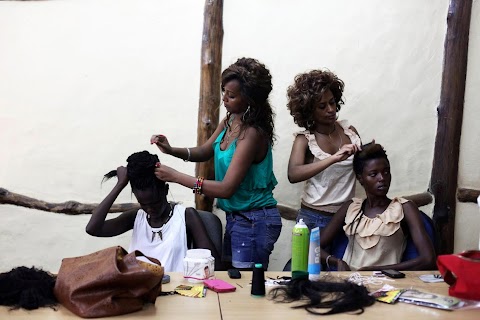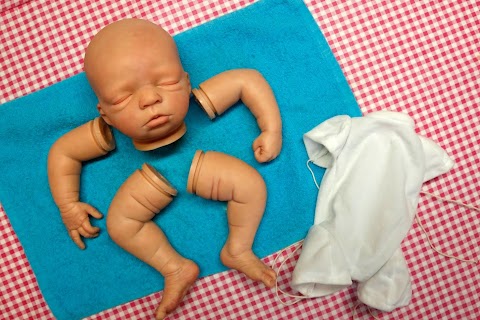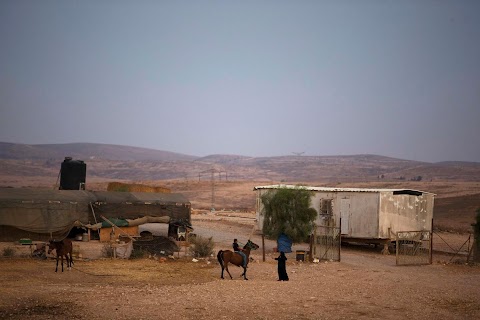
Bedouin of the Negev Desert
 Ronen Zvulun
Ronen Zvulun
A Bedouin man rides a horse in the village of al-Arakib, one of the dozens of ramshackle Bedouin Arab communities in the Negev desert, which are not recognised by the Israeli state.
For decades Bedouins have eked out an existence in Israel's southern desert, largely under the government's radar. Now, however, their lives are being impacted by developments, for which many will have to make way.

Khader Abu al-Kian (right) and his son have already seen their lives change.
They walk among the rubble of their family's home, which was demolished by Israeli authorities in Atir, a dusty village that has never existed on any official map.
Israel has already invested around $5.6 billion (3.6 billion pounds) to construct military bases in the Negev and will build 10 new communities there. The Bedouins will have to make way, a plan they say shows that Arabs are second-class citizens in Israel and is a betrayal given their past efforts to help build up the state.
"For 41 years I worked on this land, in the fresh air, for the Ministry of Agriculture and the Jewish National Fund, planting trees and putting out forest fires," said Abu al-Kian.
"I have citizenship, but they still destroyed my house. Now I have only the shirt on my back. It's like they're saying to me, 'Just leave and go to hell'," he said.

Some 200,000 Bedouins live in the southern desert, half in government-built townships and half in 42 ramshackle "unrecognised" villages lacking basic services, like this one where a young Bedouin boy is pictured walking past a set of tents.
A draft law, which will likely come to a final vote after parliament returns from recess in October, will move some 40,000 Bedouins from the villages into the seven townships, although some villages will stay.
The "Prawer Plan" will compensate many Bedouin with a combination of land and cash and bring them into "the 21st century" by significantly improving their standard of living, according to a government-sponsored report on the draft.
The Israeli position is that developing the region provides an opportunity to address the needs of a long neglected segment of the population.
Over two-thirds of Negev Bedouin lived below the poverty line in 2007, over four times the rate of Jewish households, according to the National Insurance Institute.
Slideshow

A sign reading: "Established in the Ottoman era", is seen in the village of al-Sira, which is unrecognised by the state.

A Bedouin girl walks in the village of Wadi Alna'am, also officially unrecognised.

Bedouin children play outside their home in the ramshackle community.

A camel stands next to a shed outside the Bedouin town of Segev Shalom.

A man herds sheep and goats near al-Sira.

Bedouin children play soccer in the harsh Negev.

A Bedouin youth puts a harness on a horse in the unrecognised village of al-Arakib.

Bedouin youths draw water from a well in al-Arakib.

A Bedouin boy is silhouetted against the sky as he rides a horse.

A Bedouin boy lies on a rug in Atir.

Another boy stands under a picture of Bedouin members of the Israeli Defence Forces, inside his home in Wadi Alna'am.

A Bedouin boy looks at a laptop in a tent in al-Arakib.

A youth in the village builds a fire in his tent.

Bedouins protest against the destruction of their villages, along a highway near the southern Israeli city of Beersheba.

Khader Abu al-Kian shows a copy of a photograph taken before his family's homes and orchards were demolished.

A Bedouin man stands wearing a T-shirt reading: "Don't destroy my home".

Ground which has been prepared for the construction of new homes, part of Israel's plan to expand townships for Bedouins, is seen in front of Segev Shalom.
